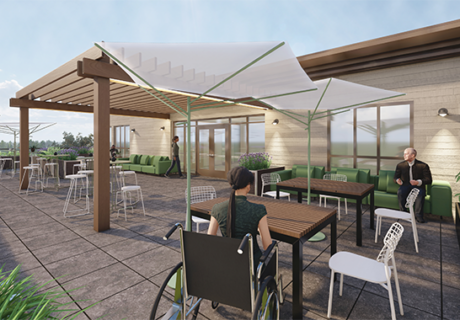Global Response: Students Tackle Real-World Issues With Isolution Unit Designs
Last summer, as the Ebola virus continued to make headlines and the World Health Organization declared the outbreak—which spread primarily in Guinea, Liberia, and Sierra Leone—a public health emergency of international concern, architect George Mann, a professor at the College of Architecture at Texas A&M University (College Station, Texas), was preparing to start a new school year and a new research and design class with masters of architecture students.
The timing inspired Mann to challenge his students to tackle some of the issues he was reading about, such as the shortage of transportable and mobile units and safe work conditions for healthcare workers, by designing and constructing a rapidly deployable, sustainable, modular isolation unit for Ebola and other communicable diseases.
“What bothered me was the idea of bringing people into a community or a hospital [for Ebola treatment],” where they could infect other people or patients, Mann says.
He wanted students’ designs to be freestanding and transportable, so they could be set up away from populated areas. Students also had to consider the size of shipping containers and how their module would fit inside a plane or cargo box, how it would be transported to a treatment site, and how graphics could be used to instruct workers on how to build the units regardless of where they were used and languages spoken.
Working over 13 days, the students delivered 11 designs. For example, Soheil Hamideh says he chose to use PVC/polyester fabric and aluminum U-section frames to create a folding accordion unit that would be easy to transport, install, and maintain (see image).
Hamideh says that while it was challenging to deal with a real situation and a short deadline, he gained a new appreciation for healthcare design. “I’m now more curious to observe how people function in a space and how the space functions back to their requirements,” he says.
Retired U.S. Air Force Lt. Gen. P.K. Carlton, who served as a consultant on the project, shared the finished ideas with some members of Congress and says he’d like to see them presented to a national audience at a major architectural meeting. “At the time they started, Ebola had not come to our country, but it certainly did in the middle of their work and [the students] offered real solutions to consider,” he says.
For more on George Mann’s work at Texas A&M, see his recognition in this year’s The HCD 10.




